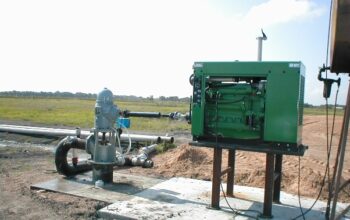Introduction to Horse Jumping
Horse jumping, an exhilarating blend of athleticism and artistry, captures the hearts of equestrian enthusiasts worldwide. The sport demands not only the prowess of the rider but also well-designed jumps that enhance both training and competition experiences. A crucial part of this preparation involves selecting the right horse jump accessories, which can significantly influence performance and safety. Whether you are a novice aiming to improve your skills or a seasoned jumper prepping for a competition, understanding how to craft and maintain the perfect horse jump is essential.
Building high-quality horse jumps requires creativity, technical skill, and attention to safety. This procedure presents a distinctive chance to design tailored challenges that test the skills of both the horse and the rider.
Understanding Horse Jump Safety
Safety is central to the construction and maintenance of horse jumps, a concern that cannot be overstated in a sport involving speed and agility. Ensuring jumps meet recommended safety standards minimizes the risk of injury to the horse and the rider. This involves regular inspections, constant maintenance, and adherence to guidelines, such as those explored in the Equestrian Safety Guidelines. Safety measures should be integral to the planning phase through everyday usage, emphasizing aspects such as structural stability and non-hazardous materials.
Essential Tools for Building Horse Jumps
Building effective and safe horse jumps requires a well-chosen selection of tools and materials. Key components include accurate measuring tools like tapes or laser measures, quality saws for cutting, and drills for assembling parts securely. The choice of materials, ranging from durable wood to weatherproof materials, contributes significantly to the lifespan of a jump. Each element must function seamlessly to create a jump that is not only challenging but also safe and reliable in different weather conditions. A complete toolkit and knowledge of their applications empower you to make lasting and effective jumps.
Step-by-Step Guide to Constructing Horse Jumps
Embarking on the task of building a horse jump might initially seem daunting, but breaking it down into actionable steps eases the process. Begin with thoughtful planning. Sketch your design, considering the desired height and width and any unique features, such as decorative elements or color schemes, that could serve training needs or competitive uses.
Once the design is set, gather the necessary materials and tools. Pay close attention to the quality of each component, ensuring they meet the required safety standards. As you assemble the frame, prioritize stability, checking each connection to prevent any weak spots. Finally, securely add all jump elements—poles, walls, or decorative features—ensuring they are evenly spaced and aligned. Conduct a comprehensive final check before using your jump, ensuring every element is safe and ready for action.
Innovative Design Ideas for Horse Jumps
The aesthetics of horse jumps can significantly impact both their functionality and appeal. Creative designs beautify your equestrian setup and can introduce varying levels of challenge during training. Brightly colored poles, unique themes, and adjustable heights are some ways to add a personal touch and functional value to your jumps. Innovative designs can stimulate the horse and rider, making every training session a dynamic experience. Consider exploratory resources like Horse Jump Design Tips to promote creative thinking and unveil new possibilities for transforming your equine space.
Maintaining Your Horse Jump Equipment
Keeping horse jump equipment in prime condition demands regular maintenance. Habitual inspections for damage or wear—particularly after heavy use or adverse weather—are vital to prolong the life and ensure the safety of each jump. Weatherproofing treatments help fortify against the elements, reducing risks of rotting or corrosion. By establishing a maintenance routine, you not only safeguard your investment but also perpetuate the safety of the riding environment, maximizing the lifespan and utility of each jump.
Frequently Asked Questions About Horse Jumps
Q: How high should a horse jump be?
A: The height of a horse jump should reflect the experience and skill level of both the horse and rider. Beginners often benefit from lower jumps to build confidence and skill, while more accomplished jumpers can take on greater heights that present an actual test of ability and response.
Q: What materials are best suited for horse jumps?
A: The durability and safety of materials used in horse jumps are critical. Opt for treated woods that offer resilience to weathering and weight. Weather-resistant metals can add stability and endurance to the structure, ensuring that jumps are reliable and long-lasting, irrespective of park placement or conditions.



